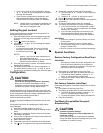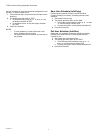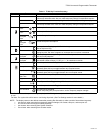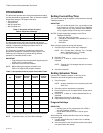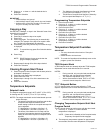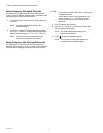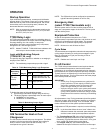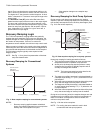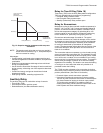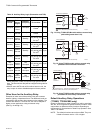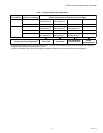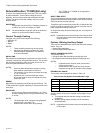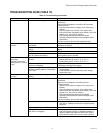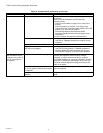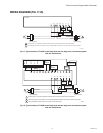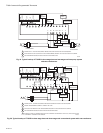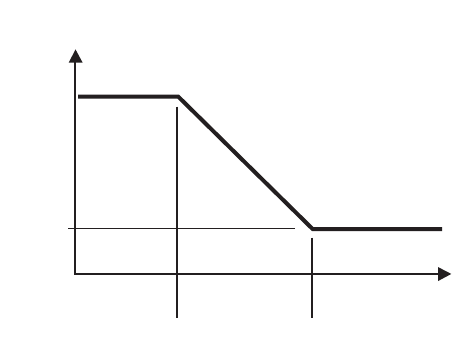
T7350 Commercial Programmable Thermostat
21 63-2605—06
Fig. 13. Setpoint ramping parameters with ramp rate
calculation.
NOTE: The setpoint used during the cool recovery period is
similar to the heat mode in Fig. 11, except the slope of
the line reverses for cooling.
Advantages:
• Comfort setting is achieved at the programmed time and
maintained regardless of weather conditions; occupants are
comfortable.
• Drafts from low-temperature discharge air are minimized
during Occupied periods.
• Use of the more economical first stage of heat is maximized
during recovery, minimizing use of the expensive later heat
stage(s).
• Comfort and energy savings can be achieved in both
heating and cooling.
• Heat cycling reduced, extending equipment life.
Auxiliary Relay
The auxiliary relay can be used with a variety of controls:
• Time-of-day (TOD).
• Economizer minimum position control.
• Dehumidification (see Dehumidification section).
Relay for Time-Of-Day (Table 16)
Time-of-day (TOD) is the Auxiliary Relay default configuration.
TOD logic operates strictly according to programming:
— Occupied: Relay contacts closed.
— Not Occupied: Relay contacts open.
— Standby (Scheduled): Relay contacts open.
Relay for Economizers
Mechanical cooling is often used with outside temperatures in
the 50°F (10°C) to 60°F (16°C) range and humidity below 50
percent. In central and northern climates, hundreds of hours
fall into this temperature category. By permitting 80 to 100
percent outside air into the system, mechanical cooling may
not be needed at all, particularly during Spring and Fall.
Economizers take advantage of outside air. The typical
economizer consists of an outside air damper, motor, outdoor
air changeover control and a minimum position potentiometer.
The motor controls the dampers. Suitability of the outside air
for cooling is determined by the outdoor air changeover
control. The potentiometer adjusts the minimum position of the
economizer dampers, which provide a minimum amount of
fresh air for ventilation.
The economizer reduces compressor run time, thereby saving
energy and extending compressor life. The drawback to using
the economizer is that during the Not Occupied period, if there
is no call for cool or outdoor air is not suitable for free cooling,
the economizer is controlled to minimum position. This position
allows some percentage of outdoor air to enter the building,
regardless of air suitability. The situation can cause the heating
or cooling to run more often than when only suitable air is
permitted to enter the building.
The T7350 can take advantage of an economizer by closing
the auxiliary relay contacts to control the economizer minimum
position potentiometer. (See Table 16 for details.)
— Powered: Allows normal economizer operation.
— Unpowered: Disables the economizer minimum position.
The lack of power causes the economizer to drive dampers
fully closed instead of staying at minimum open position.
This reduces the possibility of unsuitable outdoor air
entering the building, which lowers the internal load on the
HVAC system and saves additional energy.
COOL RECOVERY
RAMP RATE
(DEGREES/HOUR)
MaxClRamp
MinClRamp
OaTempMinClRamp OaTempMaxClRamp
OUTDOOR AIR
TEMPERATURE
M10111A



